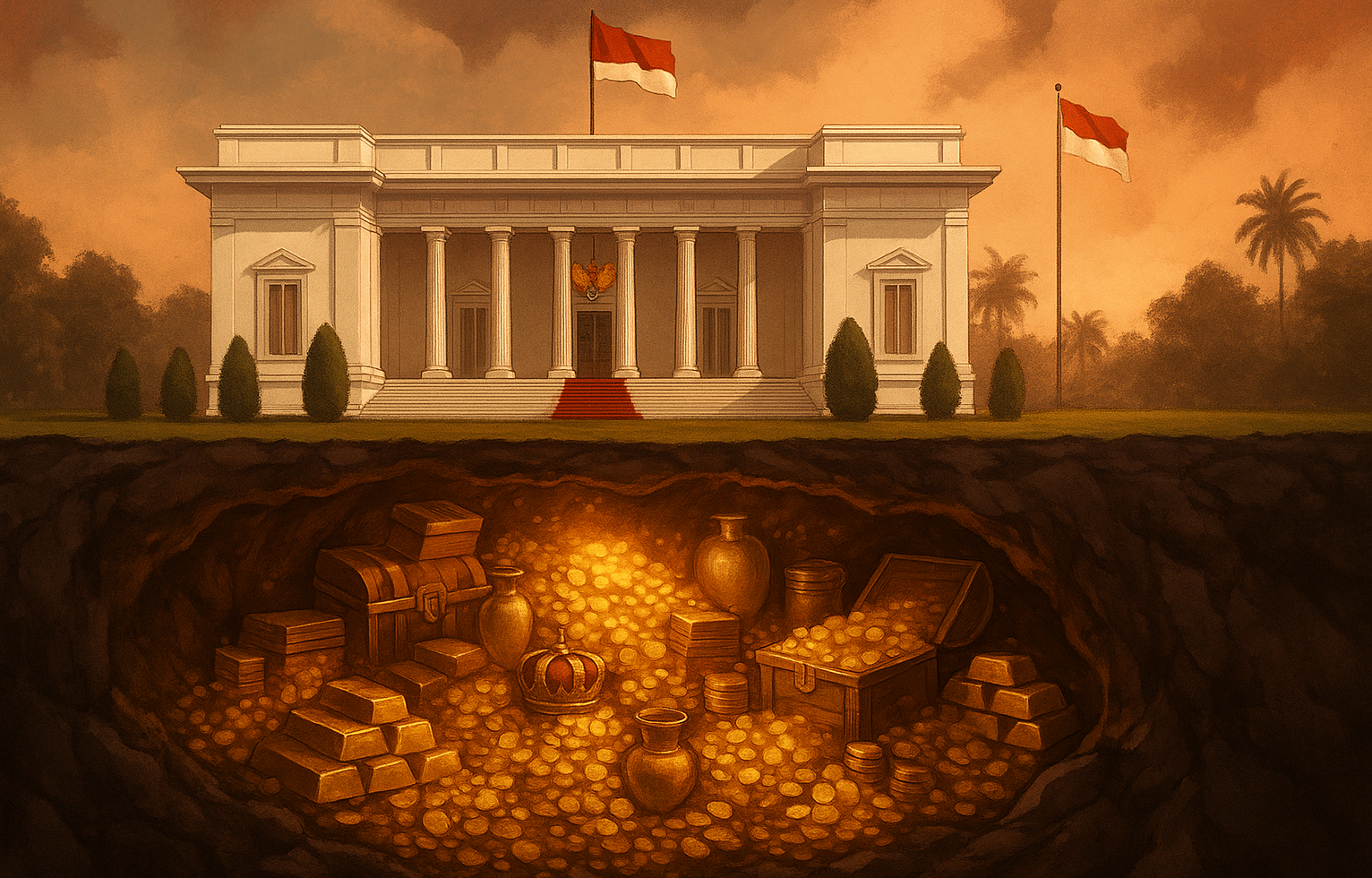
Abstract
Indonesia’s true wealth isn’t lacking — it’s trapped. SOEs collectively hold an estimated Rp 52,000 trillion ($3.5T USD) in assets, yet most sit idle, mismanaged, or politically captured, producing minimal returns while draining subsidies. This “capital bunker” — underutilized land, properties, and equipment — blocks productive flows that could close fiscal deficits without new debt. The solution is not more spending but capital architecture: clustering SOEs by function, imposing ROIC thresholds, monetizing dormant assets, divesting non-core units, and replacing political directors with performance-based leadership. With 844 SOEs now consolidated, Danantara must act as Indonesia’s capital brain — enforcing discipline, transparency, and return-driven allocation. Success demands audits, digital dashboards, and a cultural shift from budget absorption to capital multiplication.
Indonesia True Wealth
Indonesia isn’t poor — it’s capital-suffocated. For decades, our state-owned enterprises (SOEs) have been defended in the name of nationalism and protected under the guise of employment. But the brutal truth? We are sitting on tens of thousands of trillions of rupiah in assets that barely move, rarely yield, and hardly serve the people.
We’ve allowed these SOEs to become sacred cows — funded generously, scrutinized lightly. Out of 844 SOEs, only a fraction generates measurable returns. The rest consume resources, justify bloated bureaucracies, and block the flow of capital. This is not merely a budget inefficiency — it’s a national crisis of misallocated wealth.
The Hidden Crisis
According to 2023 data from the Ministry of SOEs, 65 major SOEs hold a combined Rp 10,401 trillion in assets ($700B USD). If that’s just the top 20%, then by Pareto extrapolation, the full universe of 844 SOEs may be sitting on over Rp 52,000 trillion ($3.5T USD). For context, that’s 2.5x Indonesia’s entire GDP. And yet, the market capitalization of publicly listed SOEs is only around Rp 2,200 trillion (~$143B USD).
We call this the capital bunker — a frozen vault of national wealth that neither flows nor compounds. Much of it lies in underutilized land, buildings, and equipment, often misreported or left idle. For instance, entities like PPI and BDR under IDFood reportedly sit on over 1,000 unused or underutilized properties — a clear example of how asset-heavy institutions become dead weight when not actively monetized or repurposed.
They don’t return capital. They don’t contribute to national strategy. Much of this dysfunction stems from persistent political interference, where appointments are made not on merit, but on loyalty — ensuring SOEs remain instruments of influence, not performance.
While we debate cutting subsidies, raising taxes, or issuing debt to plug our fiscal gaps, Rp 50,000+ trillion of untapped capital sits dormant. If even 4% of that capital delivered productive returns, we could close our budget deficit without issuing bonds. Let that sink in.
Water, Not Concrete
Capital behaves like water. When it flows — with discipline and direction — it nourishes the real economy. When it’s trapped in rusted pipes and bureaucratic reservoirs, it stagnates.
Indonesia’s approach to capital has been infrastructural, not strategic. We build, we spend, but we rarely ask: What’s the return? What value does this create? What multiplier does it deliver?
This is why we propose a shift — from budget logic to capital architecture. It’s not just about allocating funds, but designing return pathways — across sectors, across regions, across generations.
The Danantara Mandate
With 844 SOEs now under Danantara Indonesia, we stand at a historical turning point. This institution isn’t just another holding company — it must act as the capital brain of the republic.
Its job is to consolidate, manage, and allocate capital across the SOE landscape. Danantara must also assume full supervisory authority over SOE performance and leadership accountability — ensuring that every director, every asset, and every capital injection is tracked, justified, and aligned with national return expectations.
Here’s what Danantara must do:
- Cluster SOEs by function — logistics, energy, food, finance, digital, manufacturing — and assign clear P&L targets per cluster.
- Impose ROIC thresholds — capital must beat the cost of capital, or be reallocated.
- Launch an asset monetization blitz — lease, recycle, or securitize dormant assets.
- Pursue strategic divestments, spin-offs, and IPOs to unlock value, bring market discipline, and reduce political interference in non-core or mature SOEs.
- Replace political directors with performance-based appointments through transparent, meritocratic systems.
- Create a real-time digital dashboard that publicly tracks performance KPIs, asset utilization, subsidies, and return on capital — building pressure for transparency while exposing the inefficiencies that have long been hidden from public view.
If done right, Danantara will not be a passive fund — it will be an activist sovereign engine, deploying capital with precision, discipline, and national purpose. This isn’t just a shift in structure. It’s a change in philosophy.
What Needs to Happen Now
We’ve diagnosed the problem. But transformation needs velocity.
Danantara must begin with an immediate audit of all SOE assets and publish a 12-month roadmap for restructuring, monetization, and transparency. Regulators must legally empower Danantara to act decisively — even against legacy interests.
Consultants, investment professionals, and economists must step in — not to comment from the sidelines, but to help build the capital intelligence layer Indonesia desperately needs. Analysts must build return models. Auditors must verify. Civic tech actors must visualize data. Media must stop echoing romantic myths and start tracking the reality of returns.
And every Indonesian who believes in our potential must start asking a new question: not “how much are we spending?” but..
“how much are we getting back?”
The capital bunker must be opened.
The doctrine must be installed.
The era of The Capital Architect has begun.
Let’s make it irreversible.
